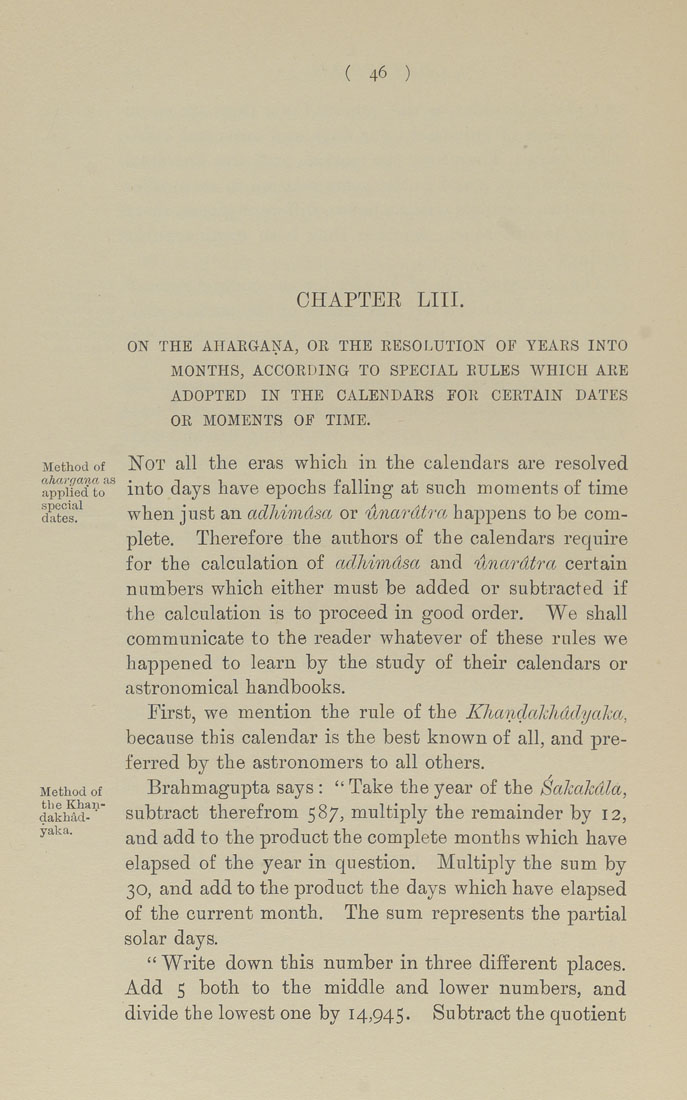Bīrūnī, Muḥammad ibn Aḥmad, Alberuni's India (v. 2)
(London : Kegan Paul, Trench, Trübner & Co., 1910.)
|
||
|
|
|
|
| Page 46 |

( 46 ) GHAPTEE LIII. ON THE AHAEGANA, OE THE RESOF.UTION OF YEAES INTO MONTHS, ACCOEDING TO SPECIAL RULES WHICH AEE ADOPTED IN THE CALENDARS FOE CEETAIN DATES OE MOMENTS OF TIME. Method of ahargana, as applied' to special dates. Method of the Khan- dakhad- yaka. Not all the eras which in the calendars are resolved into days have epochs falling at such moments of time when just an adhimdsct or iXnardtrct happens to be com¬ plete. Therefore the authors of the calendars require for the calculation of ctdhimdsa and ilnctrdtra certain numbers which either must be added or subtracted if the calculation is to proceed in good order. We shall communicate to the reader whatever of these rules we happened to learn by the study of their calendars or astronomical handbooks. First, we mention the rule of the Khanclakhddyaka, because this calendar is the best known of all, and pre¬ ferred by the astronomers to all others. Brahmagupta says : " Take the year of the Sctkctkdla, subtract therefrom 587, multiply the remainder by 12, and add to the product the complete months which have elapsed of the year in question. Multiply the sum by 30, and add to the product the days which have elapsed of the current month. The sum represents the partial solar days. " Write down this number in three different places. Add 5 both to the middle and lower numbers, and divide the lowest one by 14,945. Subtract the quotient |
| Page 46 |







